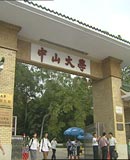不支持Flash
|
晒晒英语专业考研10大院校真题之上海交大题(4)
IV. Reading Comprehension: (30 points)
In this part you will find three passages, each followed by five questions. For each question, four tentative answers are given. Your task is to read the passages carefully, and then choose the one true answer to the related question. Write the letter that corresponds to your answer in the answer booklet.
Passage One
The Roman language served as the first model for answering the question. Even to someone with no knowledge of Latin, the similarities among Roman languages would have made it natural to suggest that they were derived from a common ancestor. On the assumption that the shared characteristic of these languages came from the common ancestor, it would have been possible to reconstruct many of the characteristics of the original common language. In much the same way it became clear that the branches of the Indo-European family could be studied and a hypothetical family tree constructed, reading back to a common ancestor. This is the tree approach. The basic process represented by the tree model is one of divergence: when languages become isolated from one another, they differ increasingly, and dialects gradually, become different until they become separate languages.
Divergence is by no means the only possible tendency in language evolution. Johannes Schmidt introduced a "wave" model, in which linguistic changer, were like waves, eventually leading to convergence; that is, growing similarity among languages that were initially quite different.
Today, however, most linguists think primarily in terms of family trees. It is necessary to construct some models of how language change might occur according to a process-based view. There are four main classes of models.
The first is the process of initial colonization, by which an uninhabited territory becomes populated; its language naturally becomes that of the colonizers. Second are processes of divergence, such as the linguistic divergence arising from separation or isolation mentioned above in relation to early models of the Indo-European languages. The third group of models is based on processes of linguistic convergence. The wave model, formulated by Schmidt in the 1370's, is an example, but convergence methods have not generally found favor among linguists.
Now, the slow and rather static operation of these processes is complicated by another factor: linguistic replacement. That factor provides the basis for a fourth class of models. In many areas of the world the languages initially spoken by the indigenous people have come to be replaced, fully or partially, by languages spoken by people coming from outside. Were it not for this large complicating factor, the world's linguistic history could be faithfully described by the initial distribution of Homo Sapiens, followed by the gradual workings of divergence and convergence. So linguistic replacement also has a key role to play in explaining the origins of the Indo-European languages.
71. The characteristics of the original common language can be described on the basis of_ .
A. the similarities among Romance languages
B. the hypothetical family tree
C. the process known as divergence
D. the common features of Roman languages
72. According to Johannes Schmidt,
A. languages change on a large scale like waves
B. divergence is not the only possible tendency in language change
C. language evolution can be explained in terms of divergence and convergence
D. different languages will become increasingly similar until they develop into one language
73. It can be inferred from Paragraph 4 that .
A. there doesn't exist any satisfactory model of language change
B. most linguists explain language change only in terms of divergence
C. most linguists generally don't accept the idea of language convergence
D. the first process in language evolution is colonization, followed by divergence
74. Which of the following is TRUE according to the passage?
A. Linguistic replacement can be ignored for the linguistic history to be fully described.
B. Linguistic replacement cannot be ignored in explaining where the Indo-European languages come from
C. Because of linguistic replacement, the other three models prove to be incorrect
D. Compared with the other models, linguistic replacement is the most important model
75. This passage is primarily written to .
A. discuss the importance of linguistic replacement
B. introduce the origin of the Indo-European language
C. explain the divergence of the Indo-European languages
D. introduce models concerning the origin of the Indo-European languages
特别说明:由于各方面情况的不断调整与变化,新浪网所提供的所有考试信息仅供参考,敬请考生以权威部门公布的正式信息为准。





